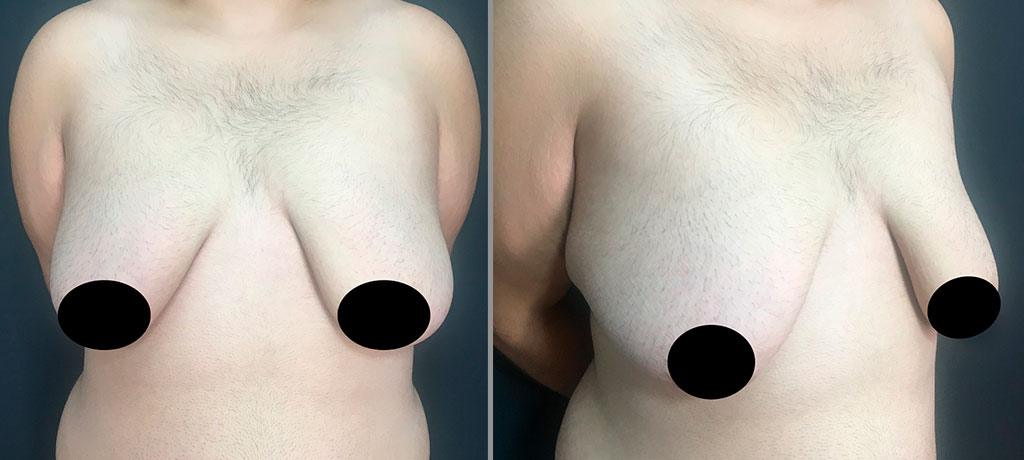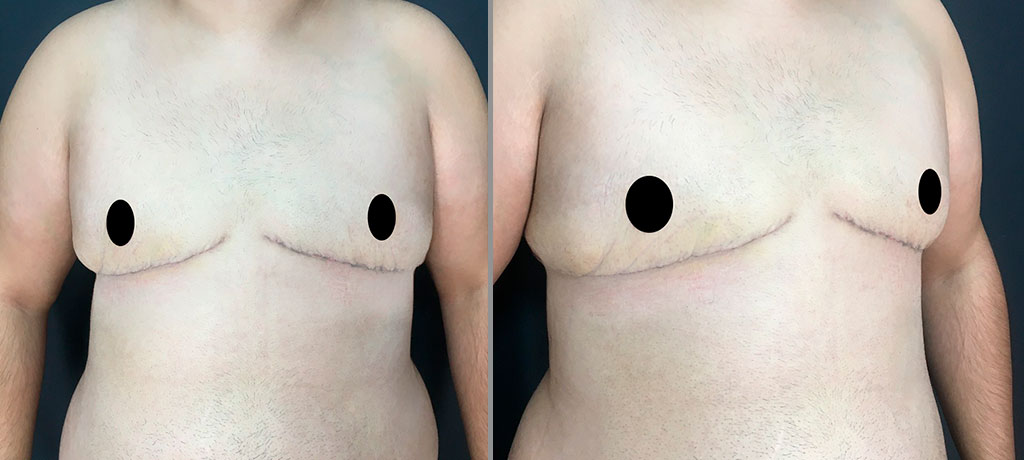PLASTIC SURGERY
MASCULINIZATION FTM

GALLERY
BEFORE AND AFTER


NOTHING LIKE SEE RESULTS
We invite you to click on the button to see more cases of our patients.
FTM MASCULINIZATION DETAILS
- Anesthesia: The most used is local and sedation, however, in some cases with a higher degree of problem, epidural block is used.Internment: Outpatient.
- Care and protection: Avoid exercise or significant efforts during the first postoperative month. A post-operative vest should be worn for the first four weeks. It will help the skin adapt to its new contour, control inflammation and prevent bleeding in the immediate postoperative period.
- Recovery: 2 to 3 weeks. (This time is variable depending on the case of the patient)
- Results: 6-12 months to have the final result.
- Associated Surgeries: Gynecomastia, mastectomy, gynecomastia resection, areola reduction, Liposuction.
FREQUENT QUESTIONS
At what age is this procedure recommended?
Can you be a candidate?
How is the protocol?
Is authorization from another specialist required?
How is it the procedure?
Breast surgery involves more than a mastectomy. Special techniques are used to shape and reduce the chest wall, position the nipples and areola, and minimize scarring.
If your breasts are small, you may be able to have surgery that preserves the skin, nipple, and areola (subcutaneous nipple-sparing mastectomy). This intervention minimizes scars, has a faster healing and generally preserves the sensation in the nipples. During this surgery, incisions are made around the edges of the areolas and the skin around them. Breast tissue is removed through the incisions, and some skin may also be removed. The rest of the skin is reattached to the edge of the areola.
If your breasts are fuller, your areolas and nipples may be removed, resized, and repositioned. This causes more scarring and loss of nipple sensation. The non-erotic sensation usually returns in months or years.
REQUIREMENTS
Although this surgery has raised the standards in body cosmetic surgery, plastic surgeons recommend it only to certain patients, since they must meet the following requirements:
- Being normal weight or slightly overweight
- Follow precise pre- and post-operative indications to minimize risks and optimize results
- Do not smoke for at least two weeks before and after surgery
- Not having diseases linked to being overweight, such as diabetes
- Maintain a healthy lifestyle, that is, eat a balanced diet and do physical activity, in order to maintain the results over time
 811 924 0611
811 924 0611